AgileDays 2019
On March 21-22, 2019, my colleagues and I attended the AgileDays 2019 conference , and I would like to talk a little about it.

Venue: Moscow, World Trade Center
AgileDays is the 13th time agile conference on agile process management. If you are not familiar with such concepts as “flat organization structure” and “team self-organization”, then I advise you to read about Agile.
The conference was held on two days: Thursday and Friday (agree, the successful completion of the working week on Wednesday).
The conference program consisted of almost 100 reports and workshops on various topics. The speakers were employees and leaders of various companies that successfully apply Agile approaches (ABBYY, Qiwi, HeadHunter, Dodo Pizza, ScrumTrek and others).
As a rule, the performance of one speaker took 45 minutes, at the end of which it was possible to ask questions. Unfortunately, it was physically impossible to get to all the reports - the speeches were held simultaneously in different rooms, so each of us had to choose where to go (we did not agree, but often our interests coincided).

How to choose where to go? First of all, we focused on the topic of the report. Some of them are more suitable for scrum masters, others are more suitable for product owners. There are those that are primarily interesting to company executives. I don’t know why, but the full house was on a speech on the topic “How to ditch teamwork: a guide for a manager” . Apparently, the organizers did not count on such excitement, since the performance was in a relatively small press room (everyone probably wanted to quickly find out how to ruin their teams).
In between the presentations, there were coffee breaks at which we got together and discussed the speakers' speeches.
I will not say that the conference turned my mind over and made me reconsider approaches to our work. Although, most likely, this is exactly what would happen if a year ago our colleagues (or rather the management) also did not attend such an AgileDays 2018 event. From that moment (maybe even a little earlier) we embarked on the Agile transformation path and try to apply certain principles and approaches that were described at the speeches.
This conference helped me put in my head everything that I had heard from the guys before.
Here are the main (but by no means all) approaches to work that the speakers discussed in their monologues:
Each task, each feature released for sale should carry a certain benefit and value. Each member of the team must understand why and why he does it. No need to work for the sake of work, it is better to go play with your colleagues and play football. (maybe it’s just something you’ll come up with when you kick the ball).
Unfortunately, in our state. sector (and we are engaged in development for the state. customer) is not always possible to determine the values of specific features. Sometimes a task comes "from above" and it needs to be done, even if everyone understands that this is impractical. But we will try even in such situations to find the very “product value".
A lot of attention was paid to the self-organization of employees and teams in general. If a leader constantly stands above you, distributes tasks, “kicks you” and tries to control everything, then nothing good will come of it. Everything will be bad.
It will be more difficult for you to grow and develop as a good specialist, and the manager at some point will still not be able to control all processes (some of the information will be distorted by the principle of “broken phone”, the other will disappear completely). And what will happen when such a person (manager) goes on vacation or falls ill? Oh my God, the work will rise without him! (I don’t think everyone wants this).
A manager should be able to trust his employees and not try to be a “single entry point” for everyone. Employees, in turn, should try to show initiative and show their interest in projects. Seeing this, it will be much easier for the manager to get away from total control over everyone.
An autonomous team is, first of all, a self-organized team capable of fulfilling the set goals (projects). The team itself chooses the ways to achieve them. She does not need an external manager who will indicate what and how to do. All issues and concerns should be discussed jointly within the team. Yes, a team can (and should) go to the manager, but only if it understands that this issue cannot be resolved within itself (for example, it is necessary to increase the team’s resource in order to successfully complete / complete the project).
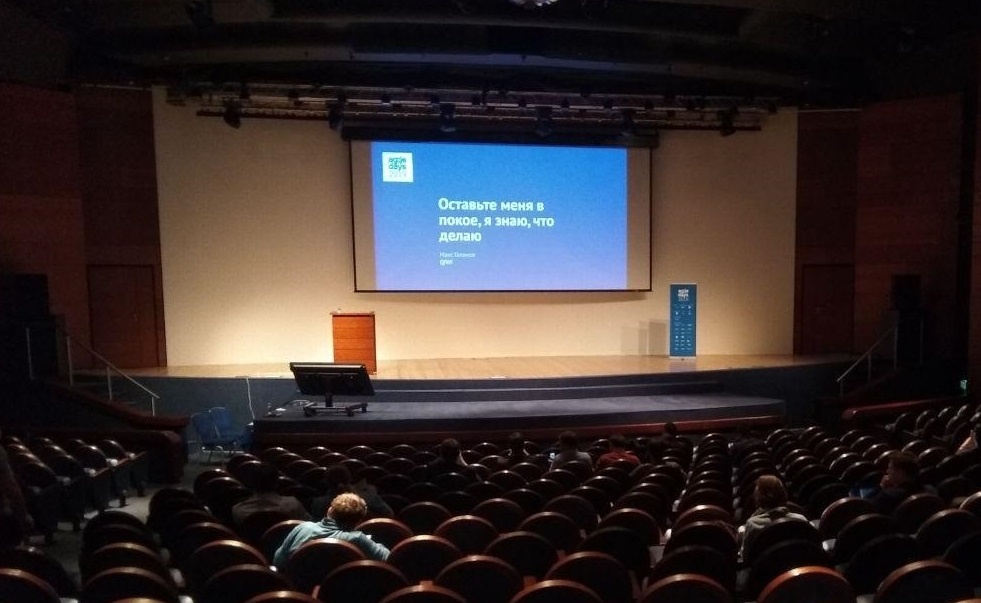
Moving away from the principle “I am the boss - you are a subordinate” has a very favorable effect on the climate within the company. People begin to communicate more freely with each other, they stop building conditional boundaries “well, he’s the boss”.
When a company adheres to the principle of a "flat organization structure", the position becomes a formality. The role of the person that he occupies in the team begins to come in first place and it can be different for everyone: it can be a person who communicates with the customer and collects requirements from him; it can be a scrum master who monitors the processes of the team and tries to improve and optimize them.
The issue of employee motivation did not go unnoticed.
Salary is not the only criterion that encourages a person to work. There are many other aspects that contribute to productive work. You need to communicate more with your employees (not only at work), trust them and ask for their opinions, and constantly keep feedback. It’s great when your team has its own “corporate spirit”. You can come up with your own attributes, for example a logo, t-shirts, caps (by the way, we already have this). You can try to organize corporate events, field trips and other things.
When a person is pleasant and comfortable to work in a team, then the work seems to him more interesting, he does not have the thought "as soon as 18:00, to get out of here already."
It would seem that the HR service should be engaged in the search for new employees (they are exactly what they need) and the leader (he must also do something). So why should the team take part in this? She already has a lot of work on the project. The answer, in fact, is simple - no one knows better than the team what they want from the candidate. It is the team to work with this person in the future. So why not give her the opportunity to make this important choice for her?
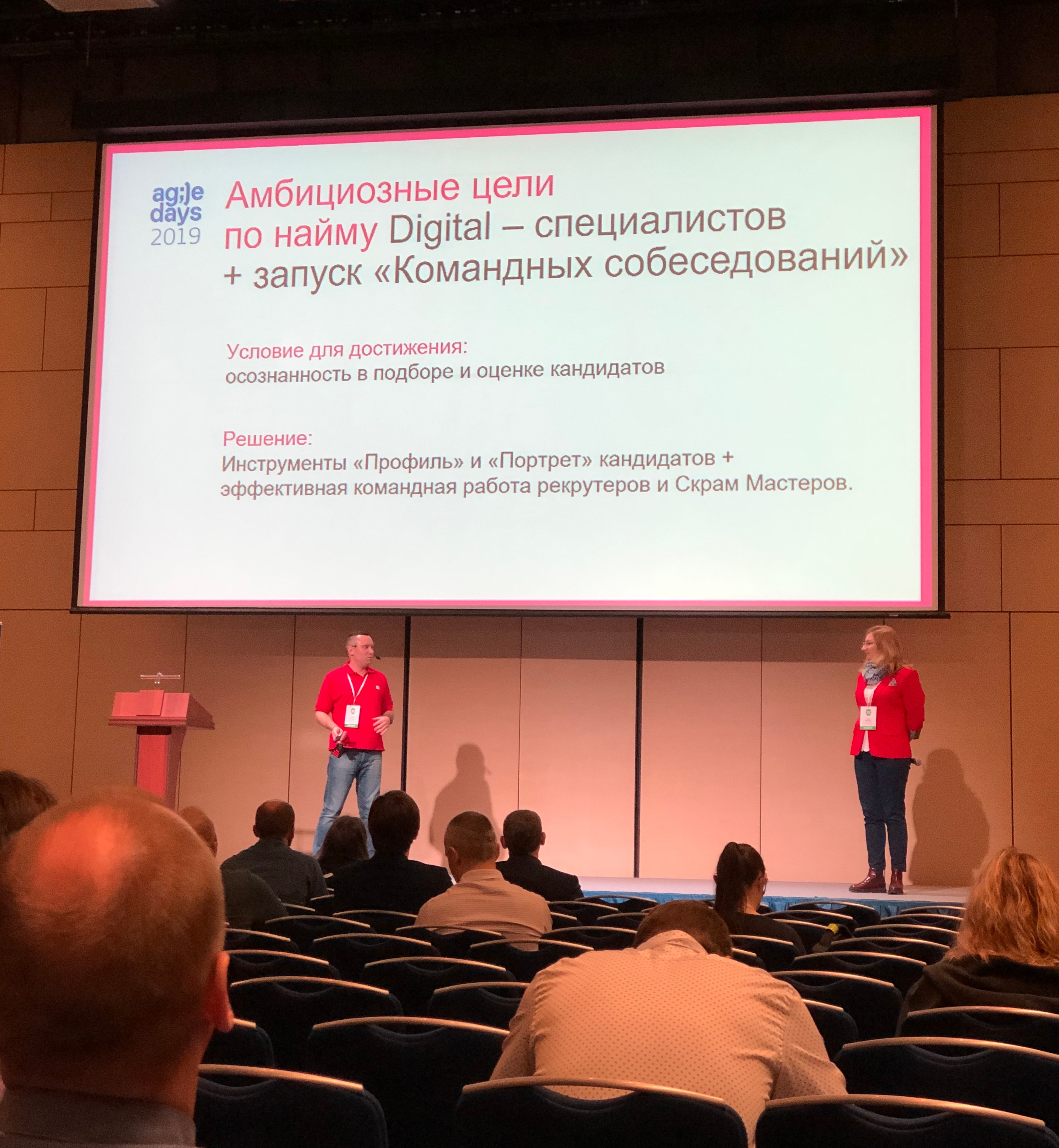
It’s already the 21st century and it’s not necessary for each of us to go to the office by 9 a.m. (especially if we are talking about the IT industry). You can work productively from home. And if a person works from home, so what prevents him from working from home, but in another city or even in another country? That's right - nothing bothers.
A distributed team is good because you have more options for finding the right employee according to the necessary criteria (skills, experience, salary level). Agree, the choice of candidates across Russia will be significantly higher than within the city alone. The costs of such employees (office maintenance, equipment) are also significantly reduced.
There is a negative point in such work - people do not see each other. It is very difficult to work with a person with whom you are personally unfamiliar. Regular video calling and periodic joint corporate events (at least once a year) can easily solve this problem.
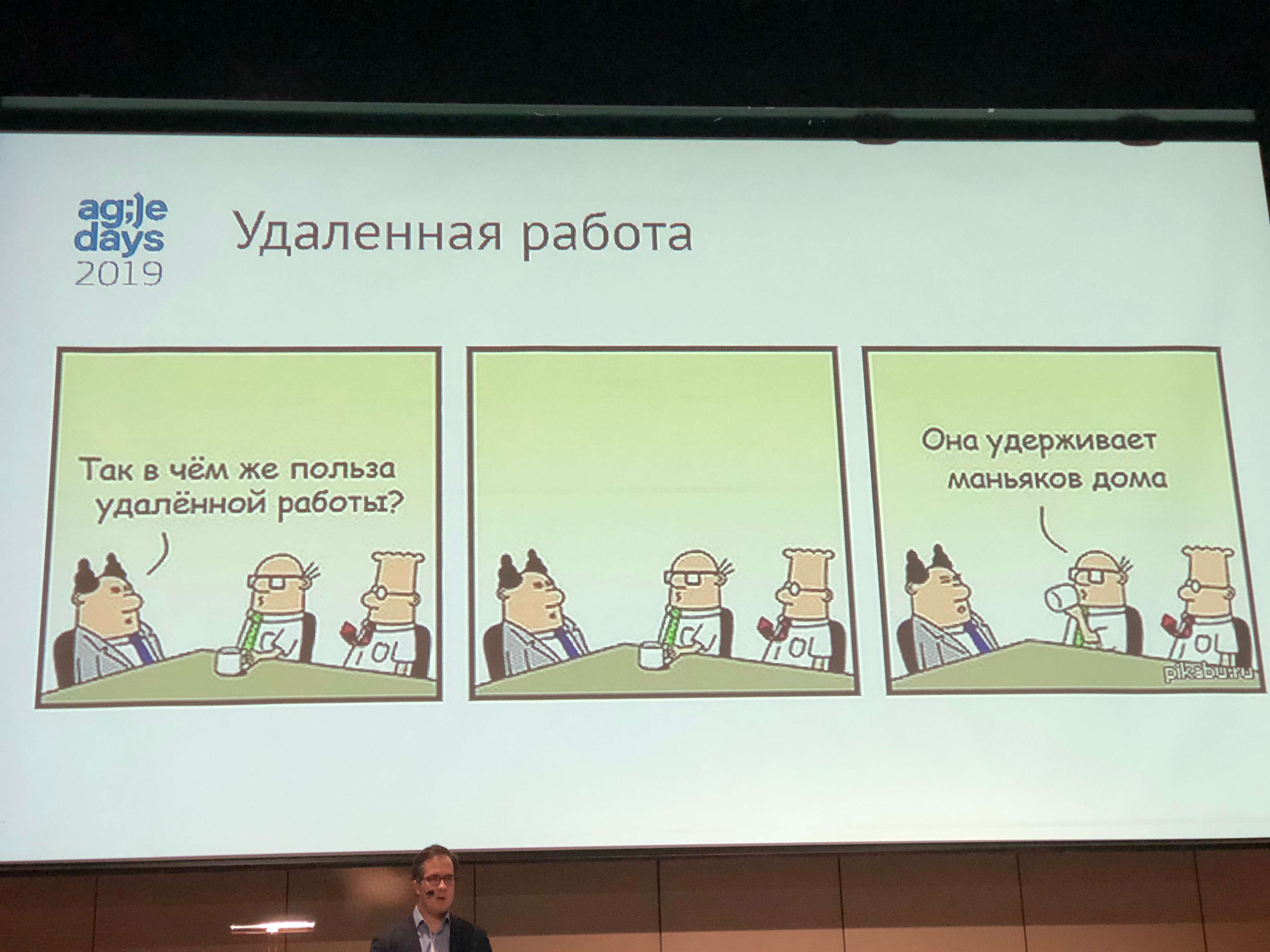
It sounds quite unusual, but believe me, it works in some companies. The approach is that each employee of the company has the opportunity to see how much his colleagues earn (! And even how much his management earns).
This is a rather complicated process and to move to open salaries you need to move very gradually. First of all, it is necessary to equalize the salaries of employees so that there is no situation where Vasya receives 5 rubles for the same work, and Petya - as much as 15. You need to be prepared to be able to answer such questions of your employees as “Why does Petya earn more than me” .
It is worth noting that disclosing salaries is only the tip of the iceberg. There are many other financial indicators that will be useful and interesting for employees to learn about.
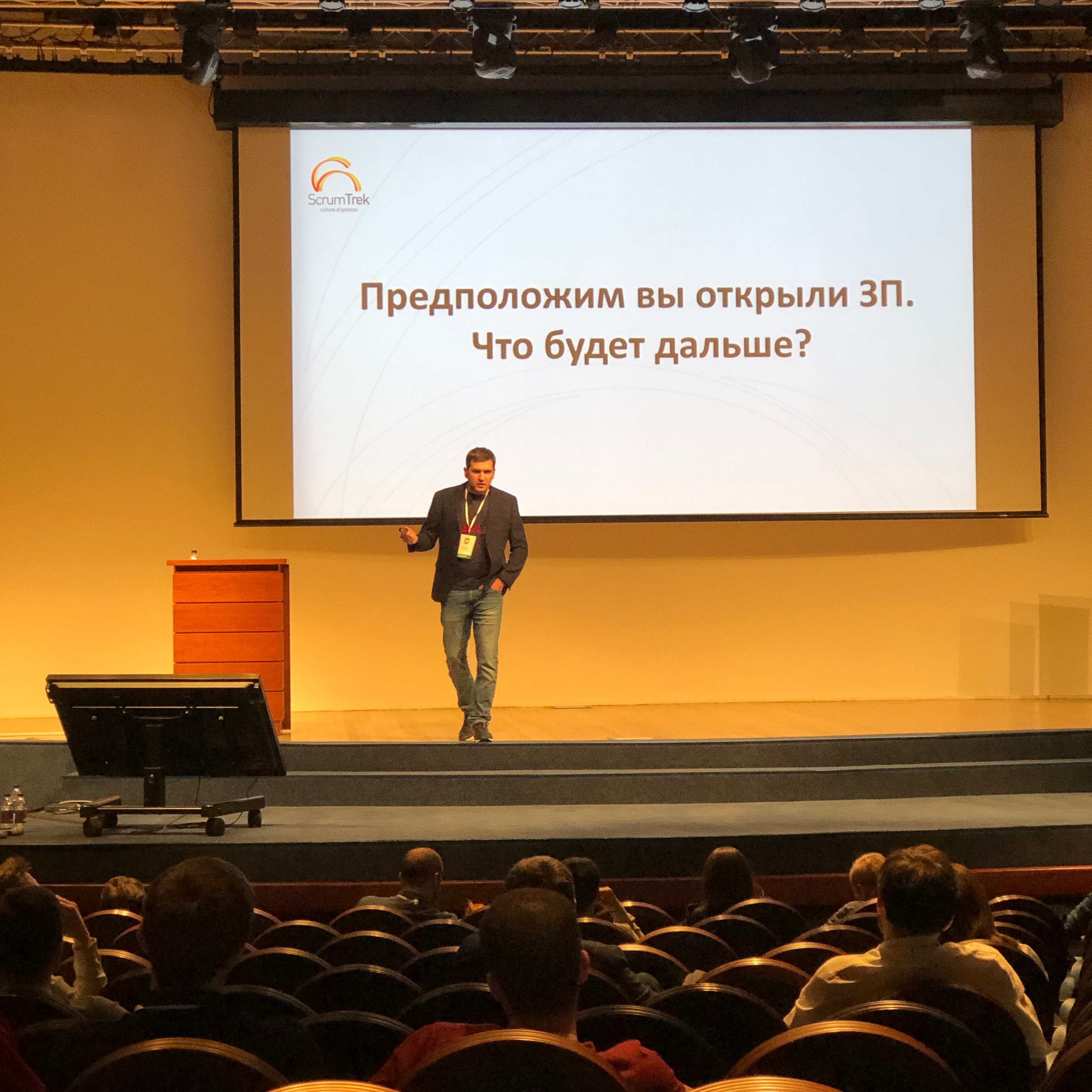
And finally(almost every speaker ended his speech): you don’t need to think that a certain approach to the processes within the company and teams will work 100% for everyone. If that were the case, everyone would have been successful for a long time. You need to understand that we are all people and we are all different. Each of us needs an individual approach. The success lies precisely in finding this “own” key. If you are uncomfortable working on Scrum, do not force yourself and your team. Take kanban for example. Maybe this is exactly what you need.
Try, experiment, make mistakes and try again, and then you will succeed.
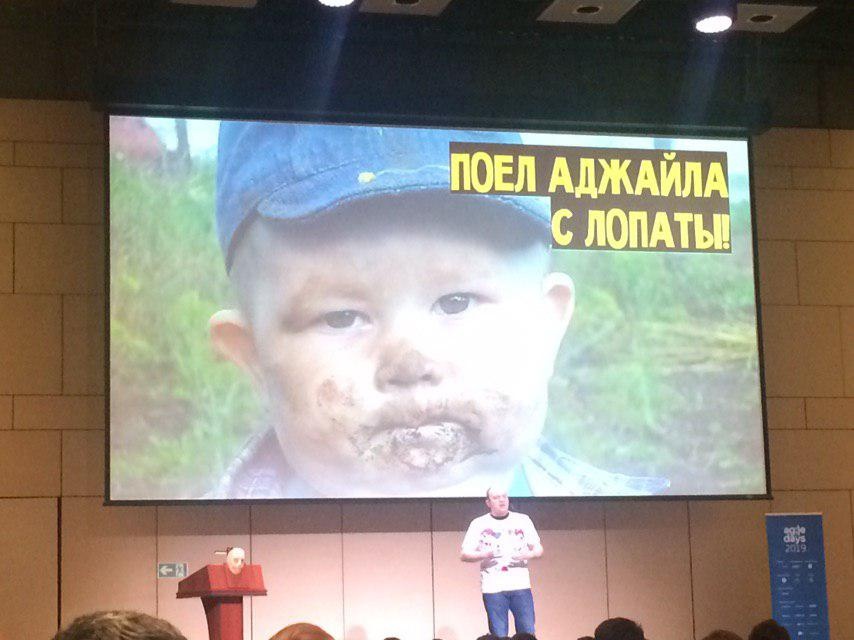

Venue: Moscow, World Trade Center
What are AgileDays?
AgileDays is the 13th time agile conference on agile process management. If you are not familiar with such concepts as “flat organization structure” and “team self-organization”, then I advise you to read about Agile.
How was it
The conference was held on two days: Thursday and Friday (agree, the successful completion of the working week on Wednesday).
The conference program consisted of almost 100 reports and workshops on various topics. The speakers were employees and leaders of various companies that successfully apply Agile approaches (ABBYY, Qiwi, HeadHunter, Dodo Pizza, ScrumTrek and others).
As a rule, the performance of one speaker took 45 minutes, at the end of which it was possible to ask questions. Unfortunately, it was physically impossible to get to all the reports - the speeches were held simultaneously in different rooms, so each of us had to choose where to go (we did not agree, but often our interests coincided).

How to choose where to go? First of all, we focused on the topic of the report. Some of them are more suitable for scrum masters, others are more suitable for product owners. There are those that are primarily interesting to company executives. I don’t know why, but the full house was on a speech on the topic “How to ditch teamwork: a guide for a manager” . Apparently, the organizers did not count on such excitement, since the performance was in a relatively small press room (everyone probably wanted to quickly find out how to ruin their teams).
In between the presentations, there were coffee breaks at which we got together and discussed the speakers' speeches.
And what useful have we learned
I will not say that the conference turned my mind over and made me reconsider approaches to our work. Although, most likely, this is exactly what would happen if a year ago our colleagues (or rather the management) also did not attend such an AgileDays 2018 event. From that moment (maybe even a little earlier) we embarked on the Agile transformation path and try to apply certain principles and approaches that were described at the speeches.
This conference helped me put in my head everything that I had heard from the guys before.
Here are the main (but by no means all) approaches to work that the speakers discussed in their monologues:
Product value
Each task, each feature released for sale should carry a certain benefit and value. Each member of the team must understand why and why he does it. No need to work for the sake of work, it is better to go play with your colleagues and play football. (maybe it’s just something you’ll come up with when you kick the ball).
Unfortunately, in our state. sector (and we are engaged in development for the state. customer) is not always possible to determine the values of specific features. Sometimes a task comes "from above" and it needs to be done, even if everyone understands that this is impractical. But we will try even in such situations to find the very “product value".
Self-organization and autonomous teams
A lot of attention was paid to the self-organization of employees and teams in general. If a leader constantly stands above you, distributes tasks, “kicks you” and tries to control everything, then nothing good will come of it. Everything will be bad.
It will be more difficult for you to grow and develop as a good specialist, and the manager at some point will still not be able to control all processes (some of the information will be distorted by the principle of “broken phone”, the other will disappear completely). And what will happen when such a person (manager) goes on vacation or falls ill? Oh my God, the work will rise without him! (I don’t think everyone wants this).
A manager should be able to trust his employees and not try to be a “single entry point” for everyone. Employees, in turn, should try to show initiative and show their interest in projects. Seeing this, it will be much easier for the manager to get away from total control over everyone.
An autonomous team is, first of all, a self-organized team capable of fulfilling the set goals (projects). The team itself chooses the ways to achieve them. She does not need an external manager who will indicate what and how to do. All issues and concerns should be discussed jointly within the team. Yes, a team can (and should) go to the manager, but only if it understands that this issue cannot be resolved within itself (for example, it is necessary to increase the team’s resource in order to successfully complete / complete the project).

Flat organization structure
Moving away from the principle “I am the boss - you are a subordinate” has a very favorable effect on the climate within the company. People begin to communicate more freely with each other, they stop building conditional boundaries “well, he’s the boss”.
When a company adheres to the principle of a "flat organization structure", the position becomes a formality. The role of the person that he occupies in the team begins to come in first place and it can be different for everyone: it can be a person who communicates with the customer and collects requirements from him; it can be a scrum master who monitors the processes of the team and tries to improve and optimize them.
Team motivation
The issue of employee motivation did not go unnoticed.
Salary is not the only criterion that encourages a person to work. There are many other aspects that contribute to productive work. You need to communicate more with your employees (not only at work), trust them and ask for their opinions, and constantly keep feedback. It’s great when your team has its own “corporate spirit”. You can come up with your own attributes, for example a logo, t-shirts, caps (by the way, we already have this). You can try to organize corporate events, field trips and other things.
When a person is pleasant and comfortable to work in a team, then the work seems to him more interesting, he does not have the thought "as soon as 18:00, to get out of here already."
Team search for new employees
It would seem that the HR service should be engaged in the search for new employees (they are exactly what they need) and the leader (he must also do something). So why should the team take part in this? She already has a lot of work on the project. The answer, in fact, is simple - no one knows better than the team what they want from the candidate. It is the team to work with this person in the future. So why not give her the opportunity to make this important choice for her?

Distributed team
It’s already the 21st century and it’s not necessary for each of us to go to the office by 9 a.m. (especially if we are talking about the IT industry). You can work productively from home. And if a person works from home, so what prevents him from working from home, but in another city or even in another country? That's right - nothing bothers.
A distributed team is good because you have more options for finding the right employee according to the necessary criteria (skills, experience, salary level). Agree, the choice of candidates across Russia will be significantly higher than within the city alone. The costs of such employees (office maintenance, equipment) are also significantly reduced.
There is a negative point in such work - people do not see each other. It is very difficult to work with a person with whom you are personally unfamiliar. Regular video calling and periodic joint corporate events (at least once a year) can easily solve this problem.

Open salaries and other financial issues of the company
It sounds quite unusual, but believe me, it works in some companies. The approach is that each employee of the company has the opportunity to see how much his colleagues earn (! And even how much his management earns).
This is a rather complicated process and to move to open salaries you need to move very gradually. First of all, it is necessary to equalize the salaries of employees so that there is no situation where Vasya receives 5 rubles for the same work, and Petya - as much as 15. You need to be prepared to be able to answer such questions of your employees as “Why does Petya earn more than me” .
It is worth noting that disclosing salaries is only the tip of the iceberg. There are many other financial indicators that will be useful and interesting for employees to learn about.

And finally(almost every speaker ended his speech): you don’t need to think that a certain approach to the processes within the company and teams will work 100% for everyone. If that were the case, everyone would have been successful for a long time. You need to understand that we are all people and we are all different. Each of us needs an individual approach. The success lies precisely in finding this “own” key. If you are uncomfortable working on Scrum, do not force yourself and your team. Take kanban for example. Maybe this is exactly what you need.
Try, experiment, make mistakes and try again, and then you will succeed.

